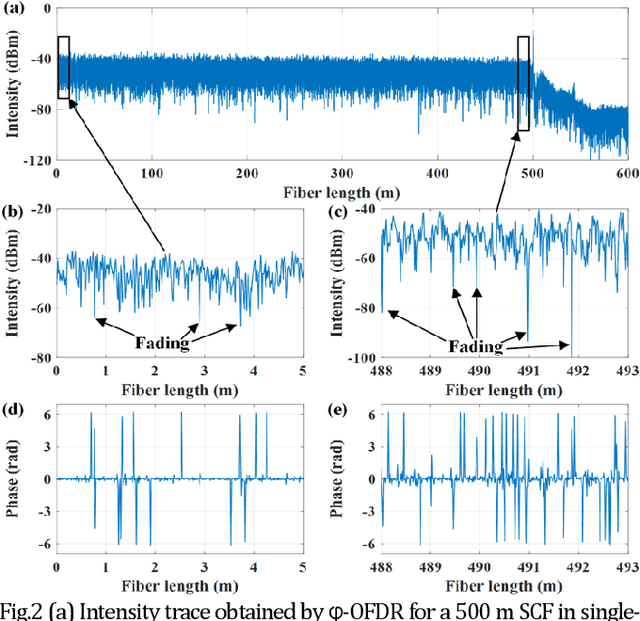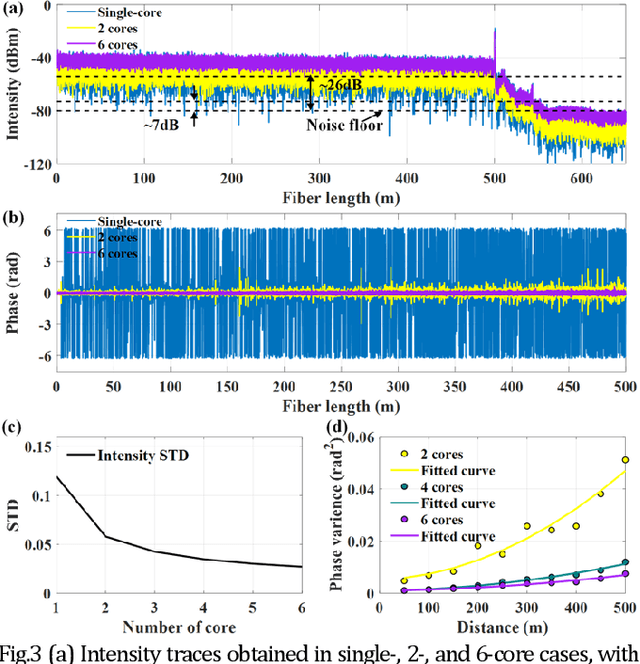Zhongwei Tan
Iterative Distortion Cancellation Algorithms for Single-Sideband Systems
Aug 12, 2025



Abstract:We propose an iterative distortion cancellation algorithm to digitally mitigate the impact of double-sideband dither signal amplitude from the automatic bias control module on Kramers-Kronig receivers without modifying physical layer structures. The algorithm utilizes the KK relation for initial signal decisions and reconstructs the distortion caused by dither signals. Experimental tests in back-to-back showed it improved tolerance to dither amplitudes up to 10% V{\pi}. For 80-km fiber transmission, the algorithm increased the receiver sensitivity by more than 1 dB, confirming the effectiveness of the proposed distortion cancellation method.
Simultaneous Pre-compensation for Bandwidth Limitation and Fiber Dispersion in Cost-Sensitive IM/DD Transmission Systems
Apr 02, 2025Abstract:We propose a pre-compensation scheme for bandwidth limitation and fiber dispersion (pre-BL-EDC) based on the modified Gerchberg-Saxton (GS) algorithm. Experimental results demonstrate 1.0/1.0/2.0 dB gains compared to modified GS pre-EDC for 20/28/32 Gbit/s bandwidth-limited systems.
Multi-core fiber enabled fading noise suppression in φ-OFDR based quantitative distributed vibration sensing
May 03, 2022

Abstract:Coherent fading has been regarded as a critical issue in phase-sensitive optical frequency domain reflectometry ({\phi}-OFDR) based distributed fiber-optic sensing. Here, we report on an approach for fading noise suppression in {\phi}-OFDR with multi-core fiber. By exploiting the independent nature of the randomness in the distribution of reflective index in each of the cores, the drastic phase fluctuations due to the fading phenomina can be effectively alleviated by applying weighted vectorial averaging for the Rayleigh backscattering traces from each of the cores with distinct fading distributions. With the consistent linear response with respect to external excitation of interest for each of the cores, demonstration for the propsoed {\phi}-OFDR with a commercial seven-core fiber has achieved highly sensitive quantitative distributed vibration sensing with about 2.2 nm length precision and 2 cm sensing resolution along the 500 m fiber, corresponding to a range resolution factor as high as about about 4E-5. Featuring long distance, high sensitivity, high resolution, and fading robustness, this approach has shown promising potentials in various sensing techniques for a wide range of practical scenarios.
 Add to Chrome
Add to Chrome Add to Firefox
Add to Firefox Add to Edge
Add to Edge